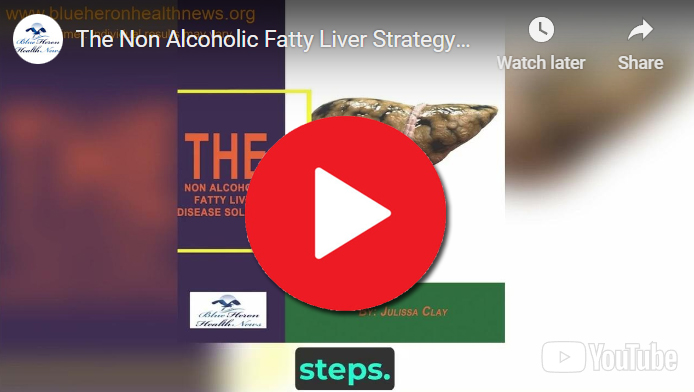
The Non Alcoholic Fatty Liver Strategy™ By Julissa Clay the program discussed in the eBook, Non Alcoholic Fatty Liver Strategy, has been designed to improve the health of your liver just by eliminating the factors and reversing the effects caused by your fatty liver. It has been made an easy-to-follow program by breaking it up into lists of recipes and stepwise instructions. Everyone can use this clinically proven program without any risk. You can claim your money back within 60 days if its results are not appealing to you.
What are the stages of fatty liver disease?
Fatty liver disease, which includes Non-Alcoholic Fatty Liver Disease (NAFLD) and Alcoholic Fatty Liver Disease (AFLD), progresses through several stages. Each stage represents a different degree of liver involvement and damage. The stages range from simple fat accumulation in the liver to severe liver disease, including cirrhosis and liver cancer. Here’s an overview of the stages of fatty liver disease:
1. Simple Steatosis (Fatty Liver)
Description:
- This is the initial stage of fatty liver disease, characterized by the accumulation of excess fat in liver cells (hepatocytes). The liver may contain more than 5-10% fat by weight.
- It occurs without significant inflammation or liver cell damage.
Symptoms:
- Often asymptomatic, meaning most people do not experience noticeable symptoms.
- When symptoms are present, they may include mild fatigue or discomfort in the upper right abdomen.
Reversibility:
- This stage is generally considered reversible with appropriate lifestyle changes, such as weight loss, healthy diet, and, in the case of AFLD, alcohol cessation.
2. Steatohepatitis
This stage is characterized by the progression from simple fat accumulation to inflammation and liver cell damage.
Non-Alcoholic Steatohepatitis (NASH)
- Description: NASH involves fat accumulation along with liver inflammation and hepatocellular injury. This stage can occur in individuals with NAFLD.
- Symptoms: Symptoms may include fatigue, pain or discomfort in the upper right abdomen, and general malaise.
Alcoholic Hepatitis
- Description: Similar to NASH but caused by excessive alcohol consumption. It includes inflammation and damage to liver cells.
- Symptoms: Symptoms can be more severe and include jaundice (yellowing of the skin and eyes), fever, nausea, vomiting, and abdominal pain.
Reversibility:
- The inflammation and liver damage can potentially be reversible, especially if diagnosed early and managed with appropriate interventions like cessation of alcohol in AFLD or lifestyle changes in NAFLD.
3. Fibrosis
Description:
- Fibrosis is the formation of scar tissue in the liver as a response to ongoing inflammation and liver cell injury. The scar tissue replaces healthy liver tissue, leading to decreased liver function.
- Fibrosis can range from mild to severe, with early fibrosis often being asymptomatic.
Symptoms:
- Symptoms may still be mild or non-specific, including fatigue, abdominal pain, or signs of liver dysfunction such as jaundice.
Reversibility:
- Early fibrosis may be reversible with treatment, but as it progresses, the liver’s ability to function normally diminishes, and the risk of progression to cirrhosis increases.
4. Cirrhosis
Description:
- Cirrhosis is the advanced stage of liver fibrosis, characterized by extensive scarring and nodular regeneration that significantly alters the liver’s structure and impairs its function.
- The liver becomes stiff and shrunken, and blood flow through the liver is disrupted.
Symptoms:
- Symptoms of cirrhosis are more pronounced and can include severe fatigue, jaundice, ascites (accumulation of fluid in the abdomen), peripheral edema (swelling of the legs), hepatic encephalopathy (confusion and altered mental status), and gastrointestinal bleeding from varices (enlarged veins, especially in the esophagus).
Irreversibility:
- Cirrhosis is generally considered irreversible. The primary focus of treatment is managing symptoms and preventing further liver damage.
5. End-Stage Liver Disease and Hepatocellular Carcinoma (HCC)
End-Stage Liver Disease:
- Description: This stage represents the most severe form of liver disease, where liver function is critically impaired.
- Symptoms: Severe symptoms of liver failure, including jaundice, ascites, variceal bleeding, encephalopathy, and muscle wasting.
- Management: Liver transplantation may be the only viable treatment option at this stage.
Hepatocellular Carcinoma (HCC):
- Description: HCC is a type of liver cancer that can develop in individuals with cirrhosis or advanced liver disease.
- Symptoms: Symptoms may include weight loss, loss of appetite, upper abdominal pain, and palpable abdominal masses.
Prognosis:
- The prognosis at this stage is generally poor, with treatment focusing on managing symptoms and complications. Liver transplantation may be considered for eligible patients with HCC.
Factors Influencing Disease Progression
The progression of fatty liver disease is influenced by various factors, including:
- Alcohol Consumption: For AFLD, continued alcohol intake significantly increases the risk of progression.
- Obesity and Metabolic Syndrome: These are major risk factors for NAFLD progression to NASH and cirrhosis.
- Genetics: Genetic predispositions can affect the likelihood of disease progression.
- Age and Gender: Older age and female gender can be associated with higher risk of progression in NAFLD.
- Coexisting Conditions: Other liver conditions, such as viral hepatitis, can accelerate liver damage.
Conclusion
Understanding the stages of fatty liver disease is crucial for early detection and intervention. Early-stage fatty liver disease, such as simple steatosis, is often reversible with lifestyle changes. However, as the disease progresses through steatohepatitis, fibrosis, and cirrhosis, the risk of irreversible damage and serious complications increases. Regular monitoring, lifestyle interventions, and medical management are key to preventing the progression of fatty liver disease.

The Non Alcoholic Fatty Liver Strategy™ By Julissa Clay the program discussed in the eBook, Non Alcoholic Fatty Liver Strategy, has been designed to improve the health of your liver just by eliminating the factors and reversing the effects caused by your fatty liver. It has been made an easy-to-follow program by breaking it up into lists of recipes and stepwise instructions. Everyone can use this clinically proven program without any risk. You can claim your money back within 60 days if its results are not appealing to you.